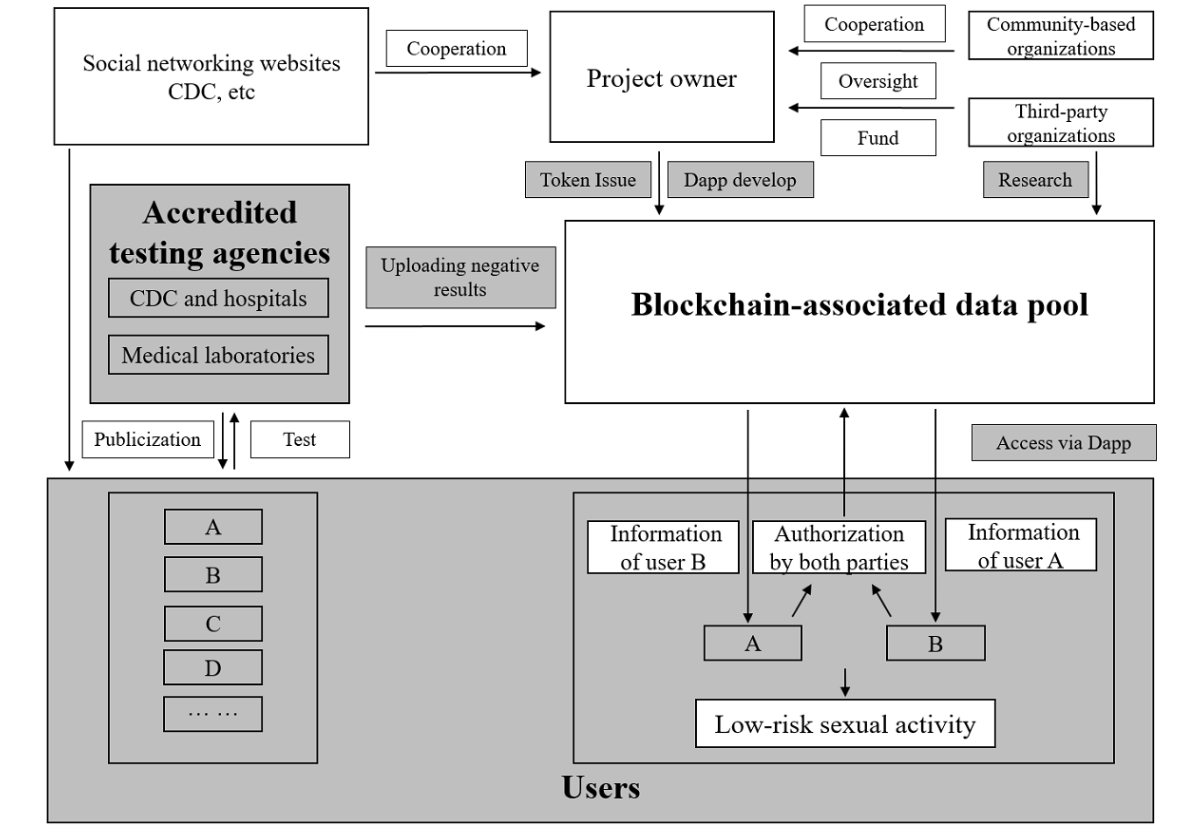Disclosure: The views and opinions expressed here belong solely to the author and do not represent the views and opinions of crypto.news’ editorial.
Imagine living your life where every second person you meet would discriminate against you and stigmatize you. Just for a few seconds, put yourself in those shoes and think again: every second person you meet.
Horrible, right? I wish it were just my nightmares or just a catchy phrase to start an article, but that is the reality for people who live with HIV.
It starts back in the 1980s when President Ronald Reagan’s general attitude to the HIV/AIDS epidemic — which they called the “gay plague” — was just ignorance and stupidity. And after almost four decades, not much has changed. The results of stigmatizing people who live with HIV were well-documented, and the data is terrifying: over 50% of all the people globally have discriminatory and negative opinions about people who tested positive for HIV, according to the Joint United Nations Programme on HIV/AIDS (UNAIDS).
World Health Organization (WHO) data shows that around 38.5 million people were diagnosed HIV-positive by the end of 2021. If you break the UNAIDS data down, you will see that Africa, Asia and Latin America combined have approximately 33 million people tested positive for HIV, which is roughly 85% of the overall number of people carrying HIV worldwide.
I’m not talking about colonialism and Western supremacy (at least, not here), but the trend is obvious: if we want to stop the HIV pandemic, we should take serious steps, and we should take them now. Using every available instrument that we have. Blockchain technology could be one of the surprising yet most obvious answers if you think about it.
Back in 2014, UNAIDS released the ‘’90-90-90’ Initiative, which aimed to achieve three goals: 90% of all individuals with HIV to be aware of the diagnosis, 90% of those diagnosed to receive treatment, and 90% of those receiving treatment to suppress further development of the disease.
In order to achieve the 90-90-90 strategy, health facilities should be able to provide people with an extensive range of antiretroviral (ARV) therapy and related HIV/AIDS commodities for diagnosis, prevention, and treatment of HIV/AIDS.
To put it simply, the 90-90-90 strategy requires global transmission of the needed HIV-tests equipment as well as the ARV therapy itself, which, in some cases, could mean taking up to 4-6 pills per day per a person. Thus, health organizations must be involved in the global logistics of goods and commodities worldwide.
Meanwhile, as we can clearly see from numerous reports, the traditional supply chain management in developing countries — for example, Uganda and Ethiopia, among the most vulnerable to the HIV epidemic — was not able to provide the needed performance. The malfunctioning of traditional supply chain management and problems related to logistics have been well-documented for years now.
The logistic problem is rooted in old-fashioned paper-based supply chain management and the ease of its corruption. Blockchain technology has been used as an effective alt solution to this problem, becoming the cornerstone of logistics improvements in recent years. Just take a look at the most recent news about tech and consulting giants entering the space: from Ernst & Young to IBM to the Department of Agriculture in the United States.
Unsurprisingly, the problem with access to ARV therapy and related HIV/AIDS commodities for diagnosis lies in the weaknesses in procurement mechanisms and supply chain management systems in developing countries, as a recent study showed. Similar conclusions were made in data from 137 countries back in 2018. The most vulnerable countries tend to remain the same, suffering from the HIV pandemic the most. Digitizing the supply chain management for medicine would significantly improve the situation in the most needed regions, and blockchain technology has already been proven as a trusted solution for logistics.
Keeping in mind the world HIV-positive people live in, the world where half of the population — I will underline it one more time: it means every second person you meet — is quick to discriminate against them when their HIV status is revealed.
What could potentially help reduce prejudice and discrimination against people living with HIV? Well, I think anonymity would be one of the options.
In order to determine the HIV status of high-HIV-risk individuals and most vulnerable communities as well as to track such data credibly, anonymously and conveniently, there should be specific technologies that would allow that. Blockchain tech, again, is the perfect fit for just that.
A few years ago, the LGBT Foundation decided to place HIV tests on the blockchain, which “makes the entire process transparent and traceable.” As a result, anonymity and credibility of the process might potentially help to prevent HIV from spreading further among vulnerable populations and communities.
One more study came to a similar conclusion about the potential of data collection and storage on blockchain: “Blockchain is a nascent technology that has roots in cryptocurrency, and its features are well suited for work in HIV.” With this technology, information could be easily and credibly encrypted and then recorded and kept anonymously in a network.
Using blockchain for the healthcare sector already seems to be a quite profitable decision, with some estimations predicting this sector will reach $77.76 billion by 2027 at a Compound Annual Growth Rate (CAGR) of 39.53%. People living with HIV would just be a natural part of that huge industry, promising to make a great impact.
Another innovative approach has been proposed by a scientist Jia Liu at the Henan Center for Disease Control and Prevention, China. The study suggests the use of a decentralized application (dapp) based on blockchain to implement the so-called HIV digital vaccine (HDV) strategy.

As Liu puts it, “A, B, C, and D represent individuals belonging to high-HIV-risk populations. Tokens are exchanged when transactions occur among participants. Various transaction patterns can be used in different regions, and they may vary when the situation changes. Behaviors in the gray frames are associated with blockchain. The participants in the gray frames are the major users of the Dapp. CDC: Centers for Disease Control and Prevention; Dapp: decentralized application.”
To sum up, emerging technologies such as blockchain have the potential to dramatically change the situation with the prevention of new cases of HIV disease. First, it could be a backup for beneficial and credible solutions for supply chain management in order to reduce the corruption and weaknesses of paper-based logistics, specifically in developing countries.
Secondly, blockchain in a healthcare system would, in general, help anonymize and protect sensitive data storage for people living with HIV-positive status under the constant pressure of discrimination and stigma among the most vulnerable populations of high-HIV-risk individuals and marginalized communities.
Lastly, there is a promising study that proposes an innovative solution to address the global problem of HIV spread with the implementation of the dapps based on the public permissionless blockchain.
Yes, the proposal is theoretical; it is rather a concept. Meanwhile, it provides the framework and the strategy for its implementation, and it awaits the team of enthusiasts who would realize it for the greater good of the global population.
The most tricky thing about the developed capitalist era that we live in is that when new technologies emerge, the pioneers who enter space will mostly be the seekers of revenue, new value and quick money. And, of course, there have been and will always be scammers or people trying to leverage this for their own benefit. In that race to generate wealth, it is possible not to notice the real beneficial impact that these technologies can bring.
Blockchain technology, obviously, cannot solve all the problems humanity is facing. Yet, it has great potential to solve at least one very specific and challenging problem: it can help millions of HIV-positive people living under the stigma and discrimination have a chance for a better life.




